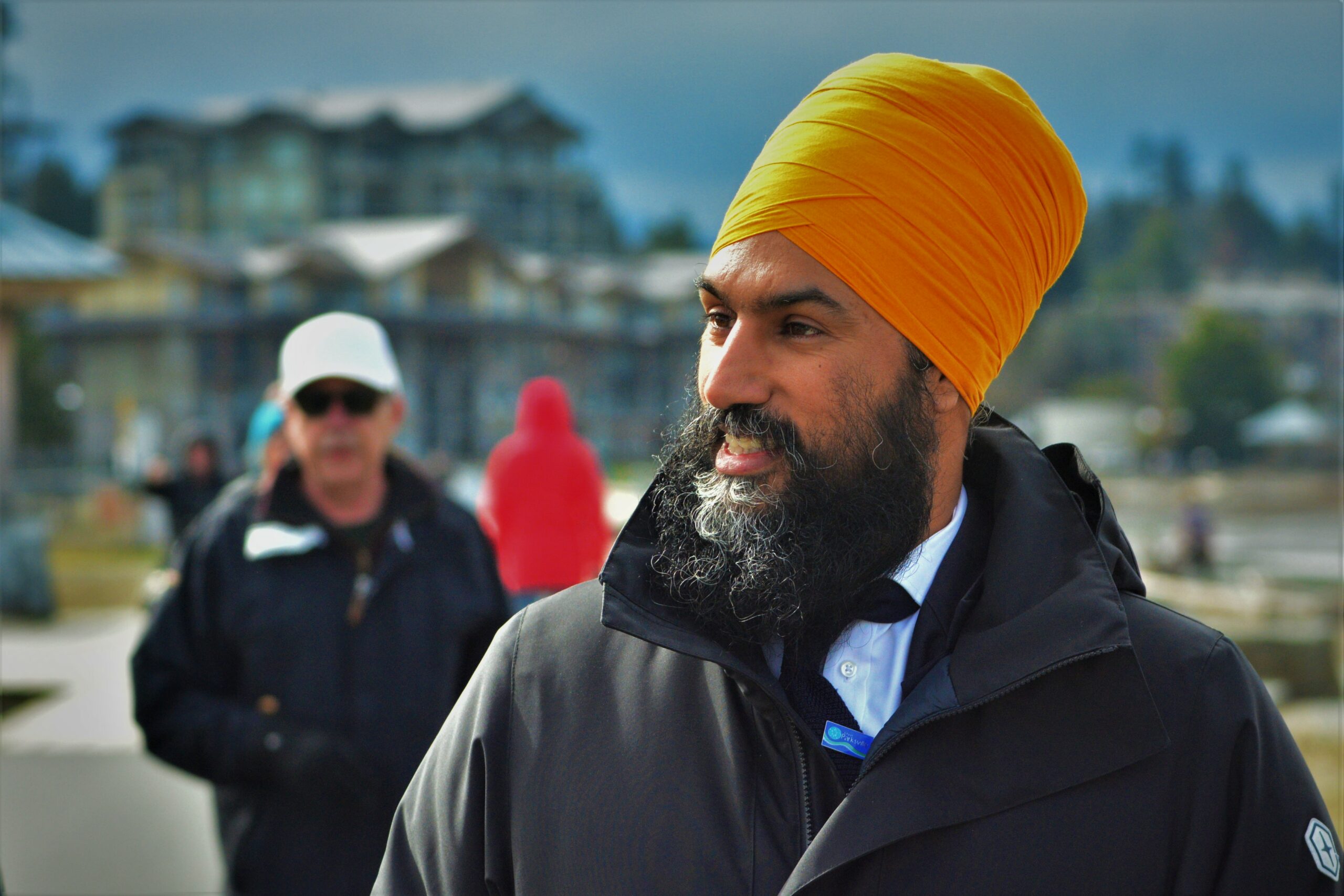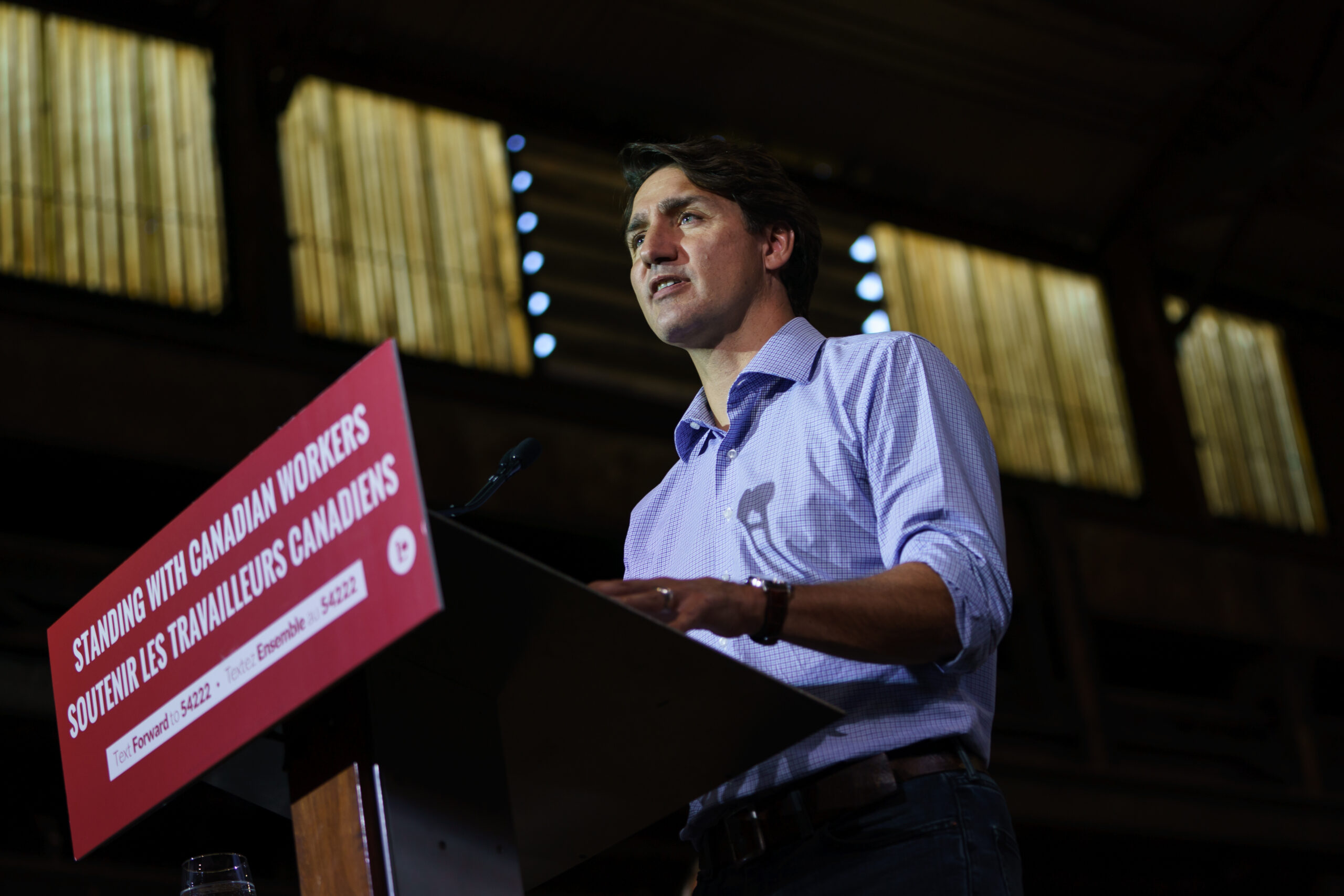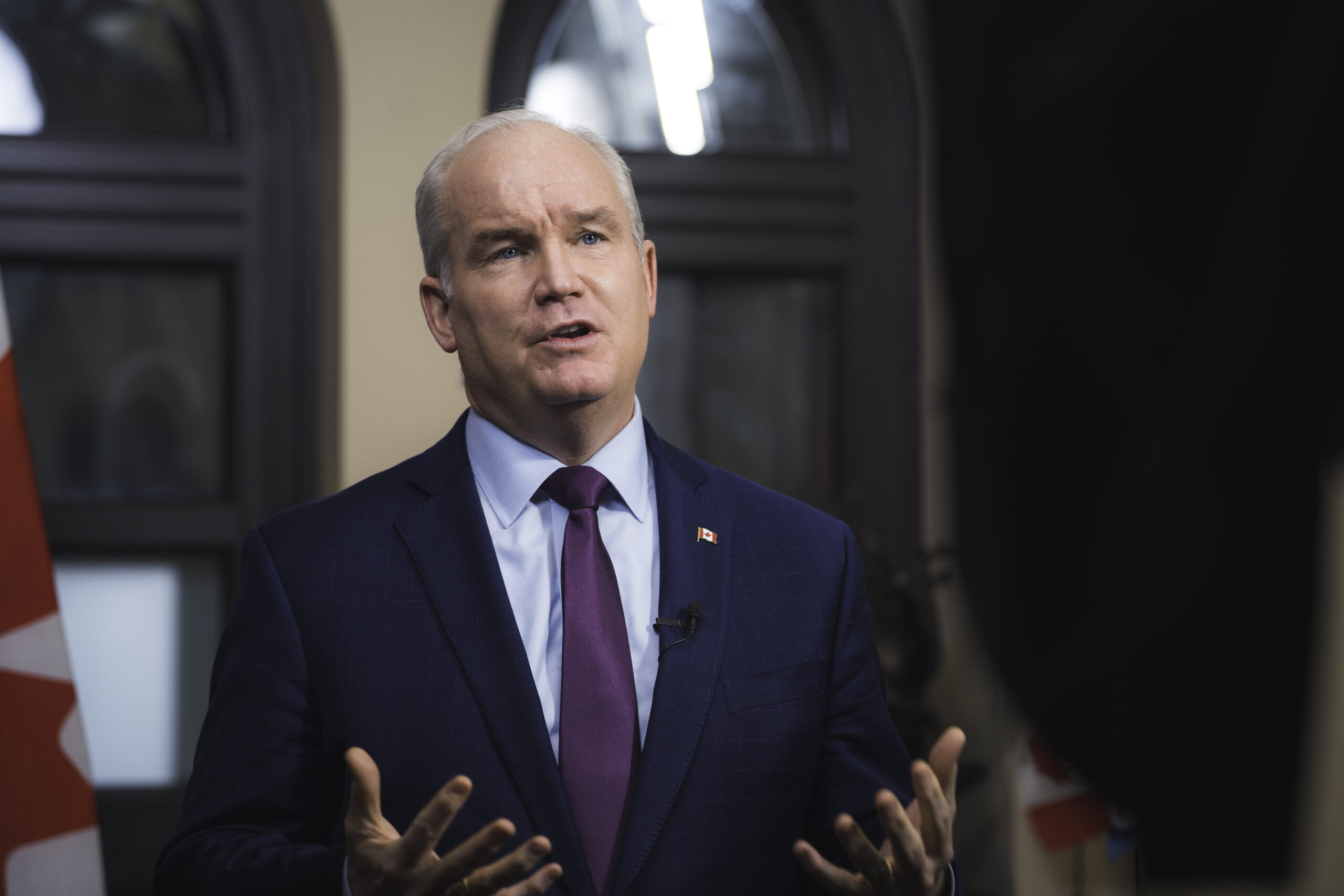
Rocky Mountain coal mine in Alberta takes next step to expansion
In Alberta, a massive open-pit coal mine near Jasper National Park is hoping to expand...
In good news, at least 20 per cent of the two-hour English-language federal leaders’ debate last week centred around climate change.
In bad news, it was pretty tough for voters to gain a whole lot of, um, clarity on the differences between the party platforms during that 23-minute-long climate change section. That’s unfortunate because there’s a lot at stake for the environment in the 2021 federal election.
“Right now, climate policy and environmental policy isn’t just a nice-to-have — it’s not something you do if you have time for it,” said Merran Smith, executive director of Clean Energy Canada.
“If you look at the world’s leading economies, they’re using climate policy as their economic policy … Good, ambitious climate policy is linked to investing in the industries of the future, not rooted in the industries of the past.”
We spent hours poring over the federal platforms of the Liberals, Conservatives, NDP and Greens for the 2021 election so you don’t have to and have done our best to boil down three key points to help you make your choice at the ballot box.
Let’s start with a topic that gets overlooked a lot in the media: plans to protect Canada’s vast wild spaces.
With Canada being home to 25 per cent of Earth’s wetlands and boreal forests, as well as endangered Prairie grasslands and the world’s longest coastline, we have a vital global role to play in the fight against climate change.
A study published in the Proceedings of the National Academy of Sciences in 2017 found protecting and restoring these landscapes, known as nature-based climate solutions, could provide more than one-third of the emissions reductions needed to stabilize global temperature increases below 2 C by 2030 under the Paris Accord.
“We have this extraordinary treasure trove of carbon that plays a global role,” said Justina Ray, president and senior scientist at Wildlife Conservation Society Canada.
Liberals: The Liberal election platform commits to protecting 25 per cent of Canada’s land and oceans by 2025 and 30 per cent by 2030. The Canadian Parks and Wilderness Society released a report card on conservation efforts in June, which gave Ottawa an A- on land protection and a B+ on ocean protection, while giving many of the provinces failing grades. This speaks to the challenge of any federal commitment on protected areas, which is that meeting those targets requires cooperation from other levels of government.
That may be why the Liberals emphasize new national parks in their platform, committing to creating 10 new national parks and 10 new national marine conserved areas in the next five years. They also promise to create 15 new urban national parks by 2030.
On the federal election campaign trail, the Liberals have also promised to create a $50 million B.C. old-growth nature fund — something that advocates for old-growth have been calling for to help resolve conflicts, such as the Fairy Creek blockades, which have continued for more than a year under B.C.’s NDP government.
The Liberals also promise to support Indigenous communities to build capacity to establish more Indigenous protected areas and Indigenous Guardians programs. The Liberals started funding Indigenous Guardians in 2017. The party also makes a vague commitment to “restore and enhance more wetlands, grasslands, and peatlands, to capture and store carbon.”
Conservatives: The Conservative election platform commits to reaching the previous Conservative government’s target of protecting 17 per cent of Canada’s land and water and to “work towards 25 per cent,” but doesn’t name a date by which it intends to do so.
The party’s federal election platform highlights the importance of working with Indigenous communities to expand the creation of Indigenous protected areas managed and stewarded by Indigenous Guardians and makes a general commitment to “develop parks and protected areas in all parts of Canada.” The Conservatives also emphasize the importance of protecting endangered ecosystems in the “southern working landscape.”
“Much of the land is already in productive use, making it harder and more expensive to set aside, but protecting this land is essential: it can significantly benefit local communities and is important for things like flood and drought protection and carbon sequestration,” the platform notes.
In terms of nature-based climate solutions, the Conservatives commit to investing an additional $3 billion between now and 2030 focused on management of forest, crop and grazing lands and restoration of grasslands, wetlands and forests. They also commit to continuing work that’s currently underway to establish a national carbon offset market.

NDP: The NDP election platform commits to the same target as the Liberals: protecting 30 per cent of our land and oceans by 2030. The party also commits to support Indigenous-led conservation and Indigenous Guardian programs, but doesn’t mention nature-based climate solutions. Much of the platform is vague. Case in point: “We will expand urban national parks and restore urban biodiversity, and ensure the Species at Risk Act is enforced.”
In a more concrete proposal, the NDP say they’d create a new Civilian Climate Corps that creates new jobs supporting conservation efforts by undertaking activities such as helping restore wetlands, and planting trees. They also commit to enshrining the right to a healthy environment in a Canadian Environmental Bill of Rights.
Greens: The Green election platform also pledges support for Indigenous-led protected areas and commits to protecting 30 per cent of land and oceans in each Canadian ecosystem by 2030. The Greens ratchet up that target to protecting 50 per cent of Canada’s land and waters by 2050, prioritizing carbon-rich ecosystems and also promise to scale up funding for nature-based climate solutions.
While this subject received a bit of play in the debate, it was so confusing, it deserves re-visiting. After all, a lot hinges on the level of climate ambition (and sincerity) of the next government.
“There’s no time left for delay,” said Smith of Clean Energy Canada. “We need to move forward, not go backwards. That’s the bottom line. We have three major federal parties that want to move forward, and one that wants to move us backward.”
For the first time, all parties have put forward real climate plans with credible policies, but the Conservatives dialled-back climate target “means a step backwards for Canada’s long-term economic competitiveness,” according to Smith.
It’s worth noting that U.S. President Joe Biden has committed to cutting his country’s emissions by 50 per cent below 2005 levels by 2030. Meanwhile, the European Union has promised to reduce emissions by 55 per cent below 1990 levels by 2030.
Liberals: The Liberals have committed to maintain Canada’s current emissions reduction commitment at 40 to 45 per cent below 2005 levels by 2030 and to reach net-zero by 2050. Critics point out that under the Liberals, emissions have actually increased since signing the Paris Agreement in 2016. The Liberals have also come under fire for purchasing the Trans Mountain oilsands export pipeline at a time when emissions need to rapidly ratchet down. All of that said, independent modelling indicates that the Liberal platform includes the policies required to achieve the 40 per cent emissions reduction target.

Conservatives: The Conservatives have committed to lower Canada’s emissions by 30 per cent below 2005 levels by 2030, which is a step backward from our current target. Modelling indicates the policies in the plan could reach the lowered 30 per cent target, but only if the industrial carbon price increases to $170 a tonne by 2030, something the party has only said it will do if Canada’s trading partners do the same.
NDP: The NDP has committed to lower Canada’s emissions by 50 per cent below 2005 levels by 2030 and reach net-zero by 2050. Their plan is not detailed enough to assess whether the proposed policies would lead to reductions in line with the target, according to experts.
Greens: The Greens committed to lower Canada’s emissions by 60 per cent below 2005 levels by 2030 and to reach net-zero before 2050. But experts say their plan is also not laid out in enough detail to assess how the party would reach the targets.
For a further breakdown of the policy proposals, check out Marc Jaccard’s analysis in Policy Options.
This is where the rubber hits the road on any climate plan: how will the federal parties handle the tough choices and tradeoffs that come with an energy transition? Tens of thousands of jobs may disappear in the coming decades and could be replaced with new clean energy jobs or jobs in other new sectors. The billion-dollar question is where those jobs will be located and what opportunities workers will have to retrain to access new opportunities.
“Let’s not forget: this is where the world’s leading economies are going,” Smith said. “We are seeing the U.S., the UK, the EU that have at least the level of ambition that we’re seeing in the Liberal, the NDP platform and Green platform, if not more. They’re going to be looking for low-carbon products. I’m looking for a platform that understands this is the way the world’s economy is going.”
Liberals: The Liberal election platform commits to establishing a $2 billion diversification fund for oil- and gas-producing provinces and sets five-year emissions reduction targets for the oil and gas sector to achieve net-zero by 2050 (starting with 2025 and 2030 milestones to ensure the oil and gas sector makes a “meaningful contribution” to meeting Canada’s 2030 climate target). Greenhouse gas emissions from the oil and gas sector have risen 20 per cent since 2005 and now make up 26 per cent of our country’s total emissions, so this is an extremely important (and previously missing) piece of the puzzle.
The Liberals also commit to move forward with just transition legislation, guided by consultation with communities that launched shortly before they called the election, and to launch a clean jobs training centre to help workers upgrade or gain new skills to work in low-carbon industries.
Conservatives: The Conservative election platform is a mixed-bag on this front, with some good commitments to help workers transition, such as a training loan that would help workers pay for skills upgrading and a $250 million investment to establish a “Canada Job Training Fund.”
But other parts of the Conservative platform seem to indicate the party plans to stick its head in the sand where the energy transition is concerned. A section of the platform titled “support for western Canadian jobs” outlines how the Conservatives would undo the changes ushered in by Bill C-69, which modernized how Canada reviews major resource projects. The legislation was massively watered down after intense lobbying by the fossil fuel industry. The Conservatives also promise to repeal Bill C-48, which banned oil tankers on B.C.’s North Coast, which could re-open the door to the Enbridge Northern Gateway oilsands pipeline.
The Conservatives also say they’d make oil export pipelines a priority and implement a federal LNG export strategy. Liquefied natural gas exports rely on the controversial process of fracking in B.C. and Alberta and are extremely emissions intensive. And the cherry on top? The Conservatives vow to pass a Critical Infrastructure Protection Act to increase punishment for protestors blocking key infrastructure

NDP: The NDP election platform commits to creating a million new, good jobs in all regions. This will include jobs building green infrastructure, which will require the use of Canadian-made steel, aluminum, cement and wood projects “because products produced by Canadian workers have some of the lowest carbon emissions in the world.”
The NDP also promises to provide expanded employment insurance benefits, re-training and job placement services, ensuring companies retain and redeploy their workers when in transition. The party commits to supporting investments in community-owned and operated clean energy projects and to work in partnership with Indigenous and northern communities to move off diesel.
Under an NDP government, an Office of Environmental Justice would be created to address the disproportionate impacts of pollution and loss of biodiversity on low-income, racialized and other marginalized communities.
Greens: The Greens would phase out oil and gas operations, with bitumen production phased out between 2030 and 2035, cancel all pipeline projects and ban fracking. To help deal with the impacts of such a phase-out the Greens would implement a Just Transition Act, and use wage insurance, retraining programs and early retirement plans to replace “every high-paying fossil fuel sector job with a high-paying green sector job.”
The Greens would also enact legislation on green jobs training programs, such as a youth climate corps, and would create an Office of Environmental Justice. They’d also increase investment in research and development to 2.5 per cent of GDP, in line with other OECD countries.
Looking for more resources to assess the candidates? Check out CBC’s platform tracker and recommendations from GreenPAC, a non-partisan organization that endorses political candidates across the political spectrum who have demonstrated environmental leadership.
Updated Sept. 22, 2021, at 4:40 p.m. PT: The article was updated to reflect the fact the European Union’s emissions reductions target for 2030 is based on 1990 levels, not 2005 levels.
Get the inside scoop on The Narwhal’s environment and climate reporting by signing up for our free newsletter. A $335 million funding commitment to fund...
Continue reading
In Alberta, a massive open-pit coal mine near Jasper National Park is hoping to expand...

A trade war could help remake B.C.’s food system, but will family farmers be left...

First Nations are leading efforts to make sure lake sturgeon can find a home in...
